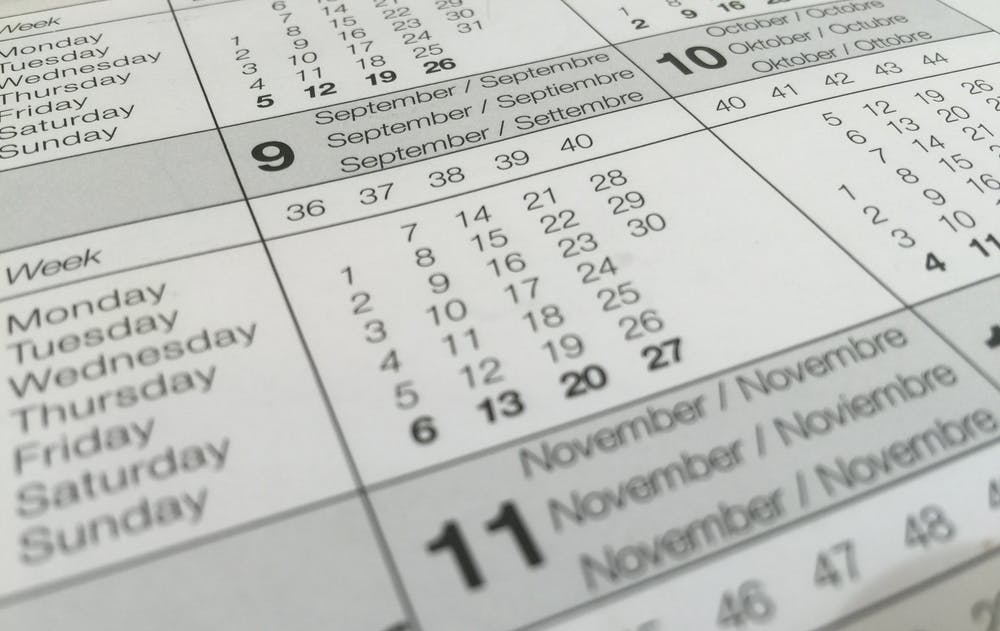1-Week Binary Options


Part of a group of long term contracts now offered by brokers around the world, 1-week binary options offer several advantages. This trading guide takes a closer look at what 1-week binary options are and what an interval of this duration means. We also consider the investing pros and cons, with tips for developing the best 1-week binary options strategy at online brokers.
Binary Options Brokers
1-Week Binary Options Explained
A binary option is a financial product where there are only two outcomes. When you purchase a contract, you can either win a predefined amount of money known as the payout or lose all the capital you paid for it. This win-lose nature has led some to refer to binary options as a form of financial betting.
1-week binary options can be traded on almost any asset, including stocks, forex, commodities, indices and cryptocurrencies. Weekend trading is also available on many of these markets, with the notable exclusion being stocks which are only available when their respective exchanges are open.
1-week – or 7-day – binary options are so-named because they are contracts with an expiry time of one week. This means the trade will close after seven days have passed, whether the price of an asset has risen or fallen.
This increased expiry time has become more popular in recent years as it affords investors time to research and analyze potential trades between purchasing contracts as well as the ability to make the most of price movements over a longer period.

Example
1-week binary options are best explained through examples…
An investor believes the Nasdaq 100 index will have risen from its current value of 11,945.50 after one week and purchases a high/low binary options contract with this expiry time. They invest $50 and the broker offers a payout of 60%, meaning that if the value does rise, they will receive their $50 stake plus a $30 payout. However, if the value remains the same or goes down, they lose their entire $50 stake. After one week, the value of the Nasdaq 100 index is 11,953.76 and the trader receives a $30 profit.
Let’s also look at a touch/no-touch or one-touch binary option…
Imagine the current market price of Brent Crude Oil is 109.51. An investor believes that at some point within the next week, the price will hit 95.00. As such, the trader places a $100 one-touch binary options trade with a 1-week expiry time, for which the broker offers a 75% payout.
After only four days, the market price of Brent Crude Oil has sunk to 92.76. As a result, the investor is paid their $100 investment as well as $75 profit straight away. Even if, after a week, the value has risen again above 95.00, the trader still wins the option as the price was touched within the expiry time.
Pros Of 1-Week Binary Options
- Time to research and analyze between trades
- More time to correct mistakes
- Simple learning curve
- More reliable data
Cons Of 1-Week Binary Options
- You have to wait a week to see if your trade is successful
- Binary options are risky
Developing A Strategy
When you trade 1-week binary options, it is important that you build a successful strategy. This will ensure you trade effectively, removing the distraction of emotion from your decision making. There is no one size fits all strategy so take time to think about your goals, preferences and style when developing your approach.
Appetite For Risk
One of the key questions to consider is how much risk you want to take. This can influence many different things such as the indicators you use to generate signals, the number of trades you place and the capital you invest into each binary options contract.
If you are someone who wants to take more risk, you might want to use indicators like the Money Flow Index (MFI) which generates lots of signals. Those who want to play it safer may prefer the Triple Moving Average Crossover. It will generate fewer signals but those it does produce are generally more reliable.
A key aspect of risk management is also controlling the amount of capital you place on each trade. You could adopt the 1% rule. This suggests that you should not risk more than 1% of your total account capital on a single binary options trade. This ensures that losses are not drastic and that you do not burn through your funds in a short space of time.
Choose A Trade Type
When trading binary options, you choose the type of trade you wish to place. There are different types of contracts that lend themselves to different things occurring in the market. When developing a strategy, think about the types of contracts you want to best suit your style.
Different types of binary options include:
- High/Low (Up/Down) – The most popular binary option, and the simplest. You predict whether the market will trade above or below the current market price after a week.
- Touch/No Touch (One Touch) – You predict whether the market will hit a set target price above or below the current value at some point during the week. If it hits that price (or misses it) within a week, you win the option. You win or lose the option if it touches it even for a split second. The market does not have to remain at that target price.
- In/Out (Boundary or Range) – You define a price channel around the current market price and predict whether the value will be within it after a week. If the market price is either within or out of the channel at the end of the week, you win or lose the option.
- Ladder – These options define five or six target prices. You predict whether the market will be trading above or below each of these prices after a week. This type of contract allows you to combine risky, high payout predictions with safer options.
Charts
These allow you to view plenty of data simply and concisely. For 1-week binary options, a candlestick chart may be the most effective way to go. They will give you a lot of accurate data that can be used to analyze markets or supplement with indicators.

When setting up a candlestick chart, it is important to choose a suitable time frame. For 1-week binary options, a time frame between one and seven days is probably best for a reliable stream of candlesticks.
Indicators
Most successful 1-week binary options strategies utilize indicators. They generate signals that notify you of good trades to place. There are many useful indicators that you can turn to, such as the Relative Strength Index (RSI). It gives a number between 0-100 where anything over 70 indicates the market is overbought and values under 30 show it is undersold. This is a good way of spotting market reversals before they happen.
Combining the Average True Range (ATR) and Average Directional Index (ADX) can also be a good way to go. They show the range and direction of price movements and they can be used together to indicate whether the market will reach a set price. These indicators will generate a lot of signals, so they are suited to more active investors.
As with charts, it is important to ensure you get the time frame of your indicators right. 1-week binary options will typically suit a one day time frame for most indicators.
Final Word On 1-Week Binary Options
1-week binary options are an increasingly popular form of retail trading, offering potentially large profits with the right strategy and patience. By combining risk management with charts and indicators, it is possible to build a successful approach. To get started, explore our list of the best brokers offering 1-week binary options.
FAQs
What Are 1-Week Binary Options?
1-week binary options are those that have an expiry time of one week. At the end of that week, the investor will either win the payout associated with the contract or lose all the money they put into it.
Can 1-Week Binary Options Be Traded At The Weekend?
You can trade binary options during weekend periods. Many assets are available to trade 24/7 including forex, commodities and cryptocurrencies.
Can 1-Week Binary Options Be Traded In The UK?
It is possible to trade binary options in the UK. The local government has made it illegal for many brokers to sell binary options contracts, however, you can still trade products by using brokers based and regulated in other regions.
Are 1-Week Binary Options The Best Expiry Time?
The chosen duration of binary options is down to personal preference. Some traders may prefer long term expiry times while others may prefer short term expiry times, such as 1 minute or 1 hour.
Which Indicators Should I Use To Trade 1-Week Binary Options?
Many indicators suit 1-week binary options. A couple that are popular with beginners are the Relative Strength Index (RSI) and the Money Flow Index (MFI).



